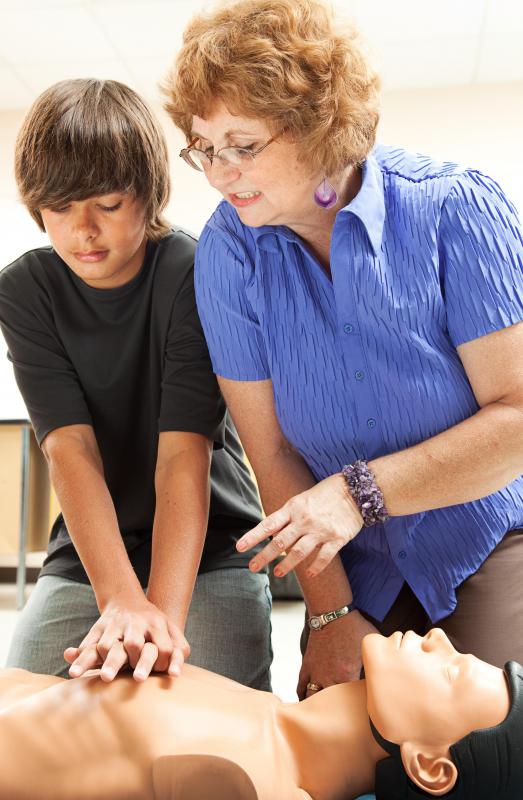At WiseGEEK, we're committed to delivering accurate, trustworthy information. Our expert-authored content is rigorously fact-checked and sourced from credible authorities. Discover how we uphold the highest standards in providing you with reliable knowledge.
How do I Become a Junior Lifeguard?
A junior lifeguard is typically a child between the ages of nine and 17, who has completed a series of courses and training sessions in lifeguarding techniques. A lifeguard cannot be certified, in most areas, until they are at least 18 years of age. The junior lifeguard program, which was founded in 1963, teaches children the basic skills and duties of a certified lifeguard by offering them a chance to become a junior lifeguard.
After being accepted into such a program, the student may need to purchase a regulation lifeguard swimsuit in order to become a junior lifeguard. Lifeguard t-shirts are often distributed to students who have enrolled in the program, or completed the program, in place of an official certification. When training as a lifeguard, head gear, often in the form of a brimmed hat, is often worn to prevent over exposure to the sun.

Adult lifeguard certification courses usually last a minimum of eight weeks and are taught in the classroom and the water. During these lessons, the student is often taught lifeguarding cardiopulmonary resuscitation (CPR), rescue techniques and water safety, among other skills. The junior lifeguard may be taught these same skills, though a certification will not be awarded upon the completion of the course. The length of a junior program varies, depending on the area where instruction is held, with some lasting as little as two weeks and others being more than eight weeks long. Most children's lessons are taught during the summer months.

Junior lifeguard courses may be tailored to the age of the participants. In other words, the younger the student, the less detailed the classes may be. As the child progresses through the program to become a junior lifeguard, or in age, the skills taught will often become more difficult. By the time the child reaches the highest age group in the junior lifeguard program, he or she should have learned most of the skills needed for future lifeguard certification.
Junior lifeguard programs are often common in places located on or near rivers, lakes, and oceans. Inland classes to become a junior lifeguard are also available and are typically taught at local swimming pools. Lifeguarding techniques covered in coursework usually vary depending on the location of the classroom. For instance, if the classes are taught in the ocean, sea life-saving techniques will be covered, as opposed to those needed to save a swimmer drowning in a pool.
Qualifying to become a junior lifeguard may require physical and medical testing. Many programs will require the student to obtain a sports physical from their family physician before applying for the program. Other requirements could include proof of the ability to swim, being able to swim a set distance in a given amount of time, and the ability to tread water.
AS FEATURED ON:
AS FEATURED ON:












Discuss this Article
Post your comments